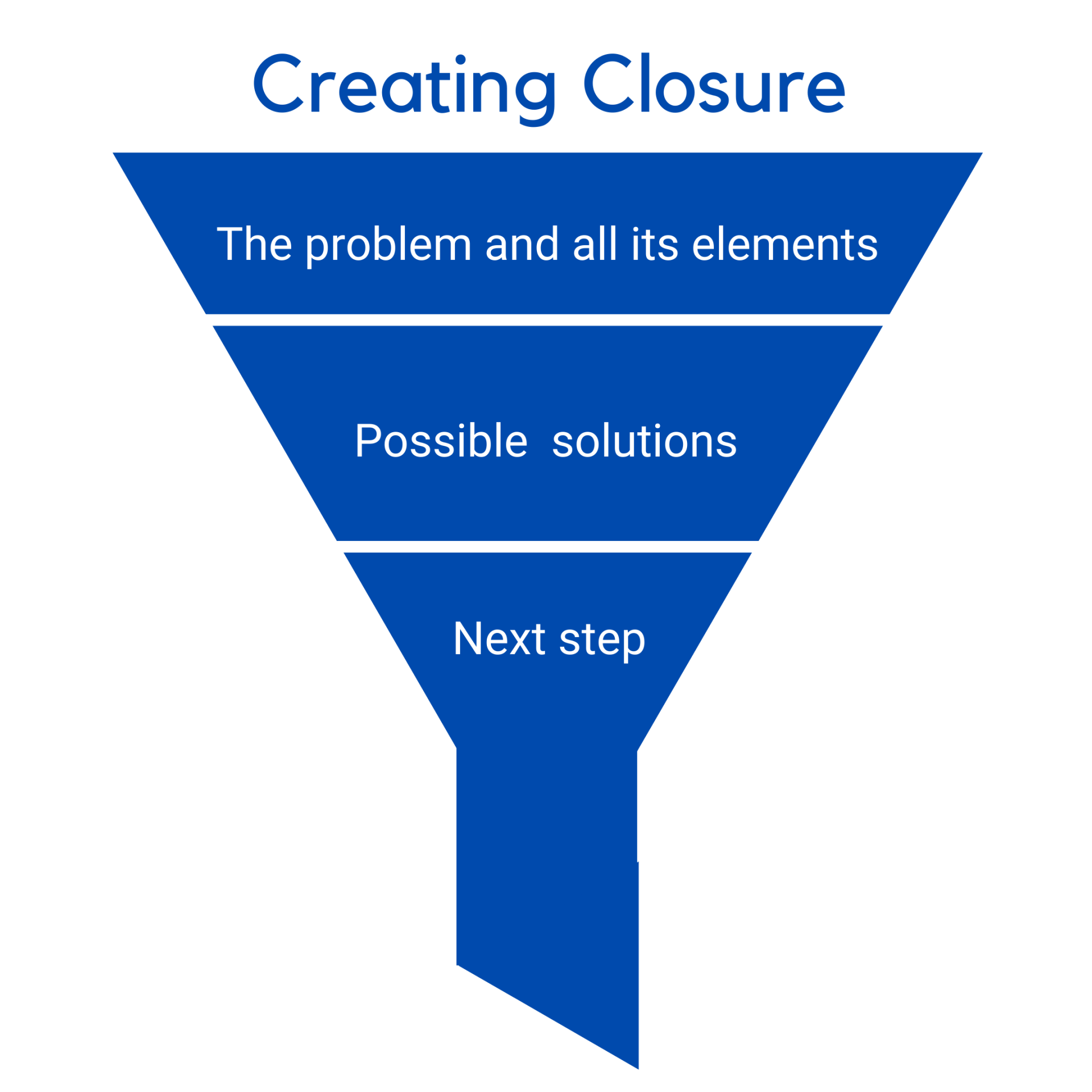When Managers Create Closure
Cathie Leimbach • August 12, 2020

How often do your conversations with team members lead to improved morale or greater productivity? How common is it for your team members to discuss a number of topics or generate several ideas but not determine any specific action steps? Maybe they expressed enthusiasm for several possible ways to improve performance but have implemented none of them. Why aren't they following through?
- As the manager, did you ask them at the end of the meeting which idea they were going to try this week?
- Did you follow up with them a few days later to see how well the new approach is working?
- As the manager, you have a responsibility to be clear about your expectations. If the purpose of your conversation is to improve productivity, ask each team member what they will do differently and when they will make the change.
- Also, ask what help they need from you to move forward with this plan. They might need training, access to additional software, or other resources to implement the new strategy.
- Be timely about checking in with them to see how well the change is going. They may have discovered some unexpected problems and need your support to work through them.
When you Create Closure at the end of a conversation or meeting, you are ensuring that you and your team members are on the same page. When they are clear on their next step, they can confidently move towards achieving team goals.

In Erica Dhawan’s book, Get Big Things Done, she defines Connectional Intelligence as the ability to combine knowledge, networks, and relationships to drive meaningful results. In today’s busy workplace, it’s not just what you know—it’s how well you connect that turns good ideas into big outcomes. Strong Connectional Intelligence within a team strengthens workplace morale and productivity by impacting four key attributes of high-performance cultures: Value Visibly – People perform better when they know their contributions matter. Leaders who highlight strengths, acknowledge effort, and celebrate progress create a culture where great work becomes contagious. Communicate Carefully – In an age of nonstop messages, clarity is a competitive advantage. Thoughtful communication reduces confusion, prevents conflict, and ensures that everyone moves forward with shared understanding. Collaborate Confidently – Connectional Intelligence flourishes when people feel empowered to contribute. Confident collaboration means inviting diverse perspectives, leveraging individual superpowers, and creating space for smart problem-solving. Trust Totally – Trust is the anchor of all high-performing teams. When leaders show reliability, transparency, and empathy, people take risks, share ideas, and stay aligned toward common goals. Connectional Intelligence helps teams innovate faster, break down silos, and accomplish what truly matters. Want to learn more? Visit Erica Dhawan’s website to explore her full body of work and deepen your understanding of Connectional Intelligence.

When people hear “psychological safety,” they often imagine a workplace where everything feels easy and conflict-free. But that’s not what true psychological safety is — and it’s not what high-performing teams need. As leadership expert R. Michael Anderson points out, work and life include tough days, unexpected problems, and moments that stretch us. A psychologically safe workplace doesn’t remove those realities. Instead, it gives people the confidence and support to face them. A safe workplace is one where employees can struggle without fear of embarrassment… try new skills without being put down… ask questions, make mistakes, and keep moving forward. It’s a place where people know their leader is behind them — not by preventing discomfort, but by helping them learn through it. Psychological safety isn’t about coddling or creating a predictable bubble. Real safety looks like this: · You may hear difficult feedback, but it helps you grow. · You are encouraged to take risks, and supported when you slip. · You are stretched beyond your comfort zone, and guided along the way. When leaders create this balance — support plus stretch — people build resilience, confidence, and higher performance. To explore more of these ideas, visit R. Michael Anderson's website .
